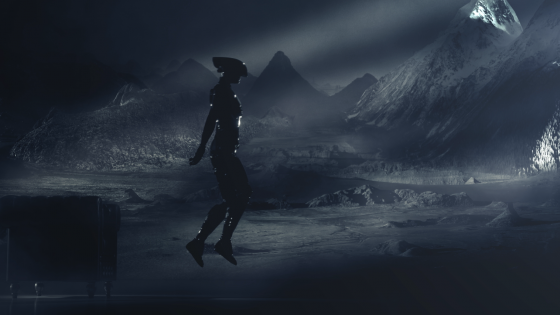
Luigi Russolo, 1911, The Revolt (La rivolta), Gemeentemuseum Den Haag (via Wikipedia)
When Kevin Roberts recently told Business Insider that gender equality was “over for him” and his advertising agencies, saying “(he)… rarely thinks about the problem,” many commentators howled at his indifference. While ad agency employment data shows women make up about 50% of the industry worker force, there’s rough parity within the ranks; 80% of men at big agencies hold leadership and creative director roles according to research from the 3% Conference.
And if 2016 lawsuits filings are any measure of disparity, patterns of abuse seem to be running rampant in some of the world’s biggest agencies with allegations of racial and gender slurs and inappropriate sexual advances. To be fair, ad firms are but microcosms of society, reflecting larger structural patterns of gender discrimination. From technology to the sciences and across media and entertainment, companies are finally striving to do their best at managing the vestiges of gender discrimination, including promoting and keeping female executive talent.
So why would Mr. Roberts casually elude this reality and go on to describe women as temperamentally ill-suited for executive leadership positions? The answer doesn’t lie in whether or not sexual discrimination still goes on — it does — but in what this says about Mr. Roberts’ status in the media industry, which is even more troubling than his casual dismissal of social ills. As a “coach” to executive talent and expertise, a mentor such as Mr. Roberts should not believe these things. Or should he? Mr. Roberts, I argue, has fallen victim to futurist fakery. That’s right, fakery.
As a society, we’ve become too enthralled with idea leaders. We’re drawn to the men and women who write, blog, teach and educate — crossing the TED stages and traveling the lecture circuits — about the importance of Big Ideas. I’m not suggesting fakers are everywhere. Many of these futuristic insighters bring plenty of real-world context and knowledge to our industry. What I am saying is that while we’ve become accustomed to these educated, talented, and creative men and women to raise our awareness, we’ve let in a few fakers along the way. It’s hard not to.
We’re much better informed and well rounded when talented people step out of their labs, classrooms and offices to share with all of us. But we shouldn’t be idea-complacent or even idea trend-driven. While ancient philosophy has taught us to be respectful of thinkers, we should also use our own powers of reason when it comes to idea hucksters. Ideas for the sake of ideas; concepts without connections to everyday and real problems in search of solutions is simply posturing. And that is what Mr. Roberts seems to be doing. He’s bought into his own ideology, projecting that he’s successful in no small part because he “knows” trends and can connect data and information; therefore, he’s putting himself in a position to constantly seek a connection, no matter how far fetched.
To give some historical context, I use the term “futurist” as it comes to us from the anti-traditionalist art movement in Italy and the Soviet Union in the early 20th century. Futurism was committed to rejecting all established art techniques and styles that depicted the “dynamism” of technology, industrialism and automation. Futurism wanted only art that put people in the experience of machinery, the then-future of economic and cultural progress. Because futurism was so thoroughly unforgiving of tradition and history, as a movement it had little depth beyond a love of industrial machinery. What it did have was an unyielding commitment to projecting the idea of progress — a future people see only in art. And as a result, by the 1930s, it had devolved into propaganda art for totalitarian regimes.
Unfortunately, Mr. Roberts is the sort of “thought” leader who has adopted the futurist role model for audiences and, in so doing, wiped away any concern for the real, the here and now. What concerns futurists are ideas, trends, disruptions and data points pointing to something… and if they’re not able to back up that something with context or evidence, well, there lies the fakery. But I don’t believe that it’s intentional deception on his part. Mr. Roberts, and many like him, believe they can’t delve into the real-world issues of today as, in their minds, they’ve already crossed over to the other side into tomorrow. Our devotion to the prophecies of industry futurists sets us all up for failure as it’s an unrealistic expectation that thought leaders can consistently think beyond what everyone else can even imagine.
Truth is, we’ve grown a bit complacent and perpetuated these sorts of idea leaders and their sometimes misguided or downright ridiculous projections that have no recognizable bearing on our industry. I admit, I’ve been known to pore over “white papers” and beg favors for tickets to hear giants in science and technology speak on the state of blah, blah, blah. I follow every MIT scientist interested in neuroscience and technology. I’ve got a PhD in political science, but I’m obsessed with the behavioral science of decision-making as I am design thinking applied to… anything. So I’m not pointing fingers. I’m saying let’s not delude ourselves. Using Freud’s observation that humans are extraordinarily good at deceiving ourselves, especially when chasing their own ideas, leaders like Mr. Roberts seem all too silly. Let’s not be fakers.
 Oishii’s Kate Canada Obregon was recently asked to talk about diversity for
Oishii’s Kate Canada Obregon was recently asked to talk about diversity for 

 One major area of growth is our deeper understanding of human behaviors, regardless of what technology we use. It’s important for companies to understand the viewer, user or participant’s POV and their psyche, because it all comes back to how you tell the story. You can create a beautiful sci-fi film using the best tools available, but when you combine these visuals with a well-told story, it becomes a much deeper experience that far surpasses the luster and gloss of new technology and VFX. Audiences want to be swept away not only visually, but emotionally. Now, we’re masters of those techniques, but the question is, what are we going to do with them?
One major area of growth is our deeper understanding of human behaviors, regardless of what technology we use. It’s important for companies to understand the viewer, user or participant’s POV and their psyche, because it all comes back to how you tell the story. You can create a beautiful sci-fi film using the best tools available, but when you combine these visuals with a well-told story, it becomes a much deeper experience that far surpasses the luster and gloss of new technology and VFX. Audiences want to be swept away not only visually, but emotionally. Now, we’re masters of those techniques, but the question is, what are we going to do with them?





